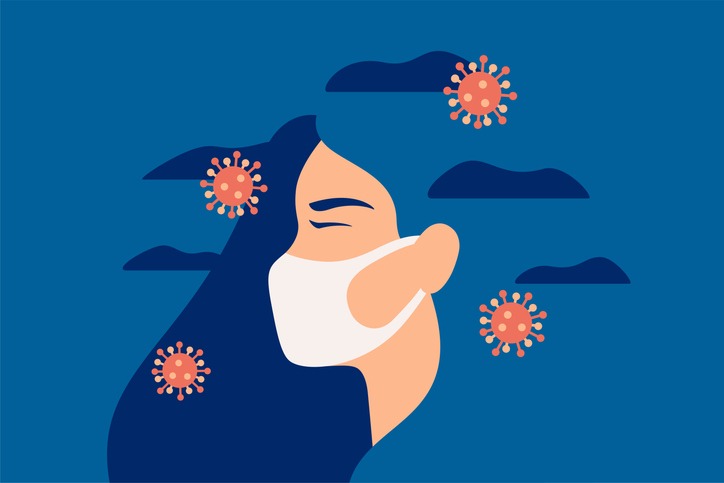
With vaccines soaking up the COVID spotlight, it’s worth asking where we’ve got to with treatments – find out the latest drugs and treatments for COVID-19 here.
CREDIT: This is an edited version of an article that originally appeared on BMJ
Written in cooperation with the World Health Organization, The BMJ’s living systematic review is a meta-analysis comparing the effects of treatments for COVID-19, using data from more than 400 randomised clinical trials worldwide.
At the time of writing, it states that systemic corticosteroids (particularly dexamethasone), interleukin-6 receptor antagonists (such as tocilizumab), and Janus kinase inhibitors (such as baricitinib) reduce mortality and have other benefits in patients with severe COVID-19, such as reducing the length of hospital stay and the time needed on a ventilator.
It also notes that the antivirals molnupiravir (Lagevrio), nirmatrelvir/ritonavir (Paxlovid), and remdesivir (Veklury) have also been shown to be effective against non-severe COVID-19.
How has treatment advice changed during the pandemic?
What is considered the ‘best’ treatment continues to change as the pandemic progresses. Where previously the primary aim was to prevent death, the world’s exposure to COVID-19 now means that outcomes are increasingly viewed in terms of reducing hospital admissions, disease severity, and perhaps even transmission.
Molnupiravir is a case in point. A study published in December 2022 involving 25 000 people confirmed that oral molnupiravir was associated with reduced viral detection and load, and patients recovered around four days more quickly than those who received usual care.
However, it didn’t reduce hospital admissions or deaths among vaccinated high-risk patients, which was the primary outcome the trial was set up to test.
Chris Butler, clinical director of the University of Oxford’s Primary Care Clinical Trials Unit and co-chief investigator of the study, tells The BMJ that although the trial found no benefit from molnupiravir for its primary outcome (to reduce the likelihood of hospital admission or death), it could have other benefits such as a faster recovery time and reduced follow-up with health services.
“This could help to ease the burden on UK health services through the treatment of selected patients at home, during times of high disease burden and pressure on key services,” he says.
Janet Scott, clinical lecturer in infectious diseases at the University of Glasgow, says, “The vaccines are now doing their job and reducing the severity of infection in the high-risk groups, so the benefit of molnupiravir is now more about time to recovery than reducing hospitalisation.”
Scott added: “In my view there are currently two major challenges in COVID-19 treatment. The prevention and treatment of long COVID, and the prevention and treatment of acute COVID-19 in the highest risk groups including immunosuppressed people. This immunosuppressed group is likely going to require a bespoke study focusing on this issue.”
Does the standard of care differ around the world?
Although there are recommended standard treatments for acute COVID-19 in line with WHO’s advice, huge differences in access mean that countries and regions are not consistent.
“The consistency around the globe is probably not what we would want at this point,” says Janet Diaz, who leads clinical management at the WHO Health Emergencies Programme. “Of all the drugs that we have available, the one that’s most consistently available and used globally is corticosteroids—what we use for patients who have severe or critical COVID-19.
But I think for the remainder of the drugs that WHO has recommended—such as interleukin-6 receptor blockers, tocilizumab or baricitinib, and oral antivirals—the availability and access is limited in many low- and middle-income countries, and that has unfortunately probably impacted their use.”
Some places are still widely using drugs that have been shown to be ineffective, such as antibiotics and ivermectin—the latter still commonly used in Brazil, for instance. Butler says that this variation in care can be justified to some extent by different vaccination rates, deprivation and nutrition, coinfection with other organisms, and problems in accessing modern antivirals. “But overall, I think there’s a lot of practice that is still not evidence based going on around the world,” he says.
How might treatment advice change further in the coming months?
The BMJ’s living systematic review is updated regularly as evidence continues to be published.
For instance, in December 2022 the Remap-Cap study of long term (180 day) outcomes in critically ill patients with COVID-19 found that the benefit of interleukin-6 receptor antagonists persisted at six months.
Martin Landray, professor of medicine and epidemiology at Oxford Population Health, University of Oxford, says that while the results raised the possibility that antiplatelet treatment in patients with severe COVID-19 would reduce long term mortality, this was not “conclusive.”
“It would be wise to wait for the results of the [10 times larger] study of aspirin in the Recovery trial,” he said. “These results, including around 18 months of follow-up, should be available early in 2023, along with the results for four treatments that have previously been shown to reduce 28 day mortality: dexamethasone, tocilizumab [an interleukin-6 receptor antagonist], baricitinib, and monoclonal antibody treatment.”


Be the first to comment